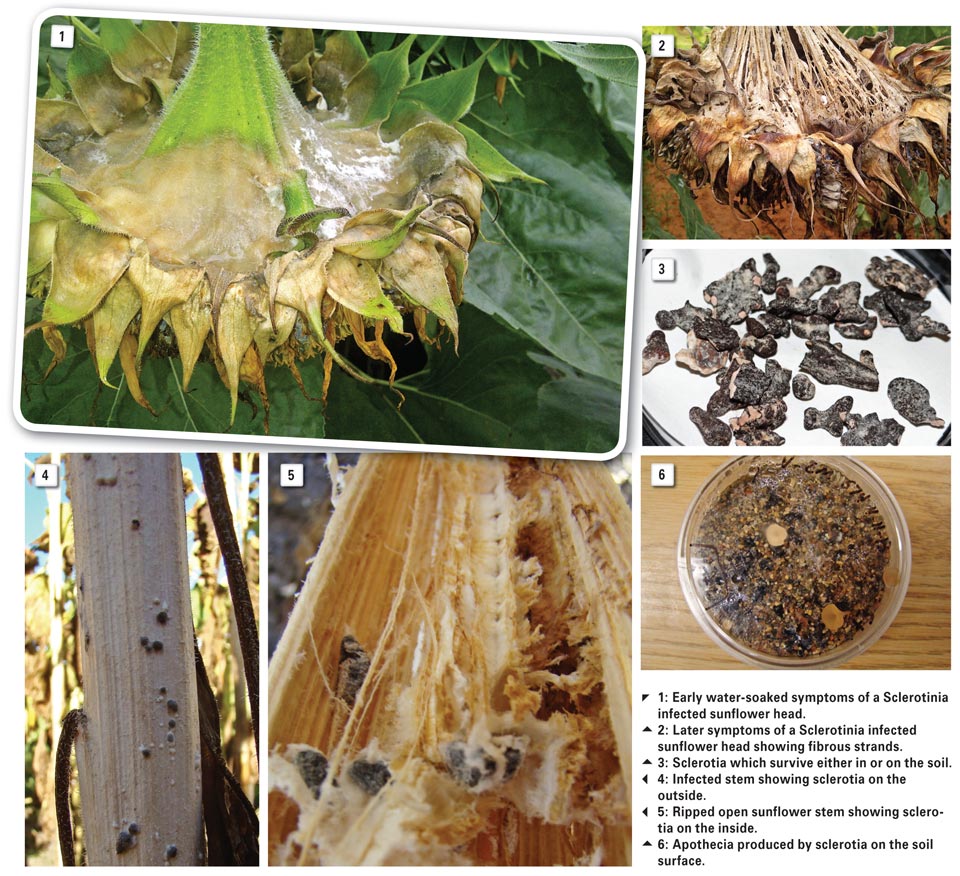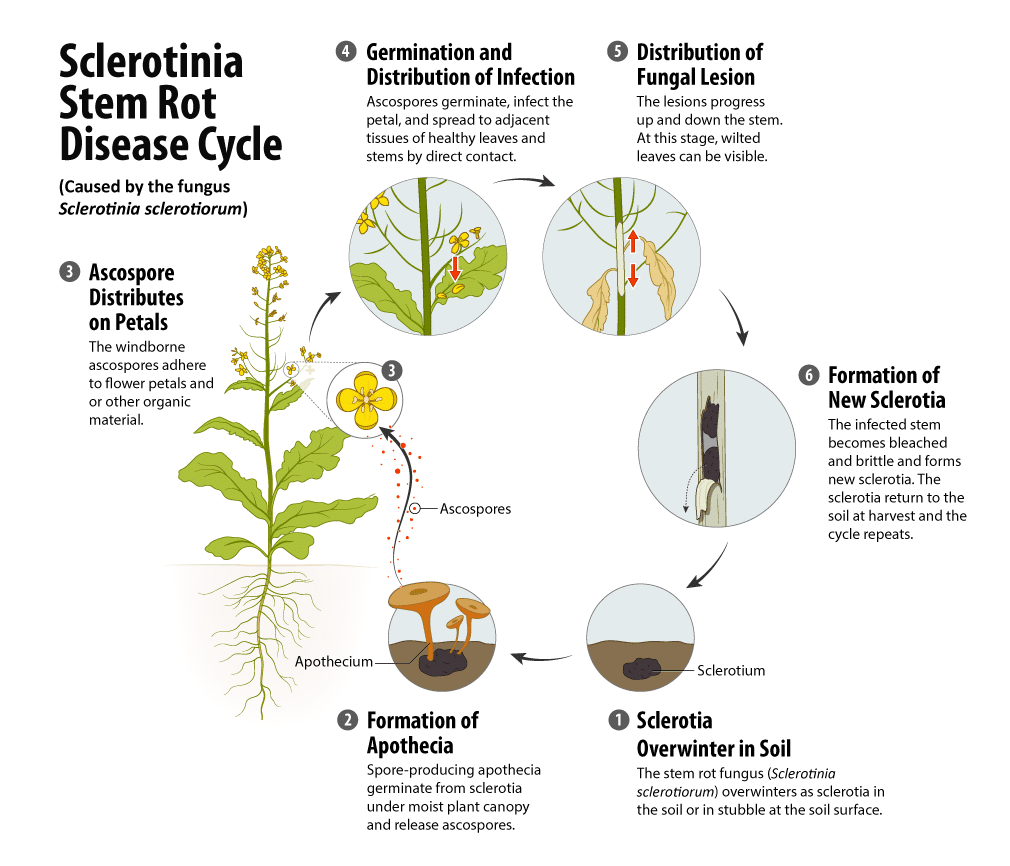Sclerotina head or stem rot
C/O: Sclerotinia sclerotiorum
Symptoms:

Head rot:
- The fungus infects the back of the head and the tissue becomes soft, light brown and spongy.
- This infection extends into the developing head (Photo 1) and down the stalk and eventually only the fibrous strands at the back of the head and upper stalk remain (Photo 2).
- The infected seed at the front of the head eventually falls out of the head due to the sheer weight of the infected seed (Photo 3).
- Large, black Sclerotia develop below the seed layer and around the seeds (Photo 4).
Stem rot:
- sudden wilting of the plant, particularly during grain fill.
- A light brown, water-soaked area at the stem base will become obvious.
- The sunflower stem pith is a white cotton-like tissue, which includes mycelial growth within which large, black sclerotia form (Photo 5).
- Stems often break at this point of infection. Heads do not fill out properly due to nutrients and water not being taken up by the plant
Disease cycle:
- Surviving structure: sclerotia
- Primary inoculum: sclerotia in soil and plant debris, apothecia germinating from sclerotia
- Secondary inoculum: air borne conidia
- Transmission: air and water

Favorable condition:
- High rainfall and cool tempr.
Management:
- Crop rotation
- Deep ploughing
- Resistant varieties or tolerant varieties.
- Early planting to avoid cool tempr and rainfall.